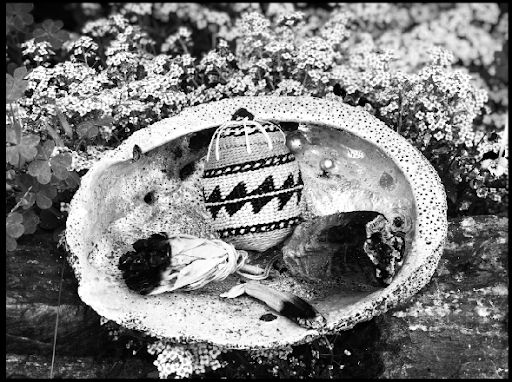Overview
Resilience Through Northwestern California Basket Weaving

Author:
LeMonie Hutt (Hoopa Valley Tribal Member)
Maggie Peters (Yurok/Karuk) Humboldt County Office of Education
Grades: 6-8 or 9-12 Ethnic Studies
Suggested Amount of Time: Four 55 minute sessions
Curriculum Themes
- History
- Cultural Strengths
- Relationship to Place
- Cross Curricular Integration
Learning Goals
Reflect on the cultural significance of basket weaving to California Tribes
Identify barriers, both contemporary and historical, that influence weavers' ability to create baskets
Examine the colonial ideologies and policies that disrupted Indigenous art forms and redefined their cultural value.
Have a deeper understanding of Indigenous resilience
Recognize that cultures can change over time, and explain how colonization affected Native traditions like basket weaving.
Lesson Overview
In this lesson, students will explore the rich tradition of basket weaving among California Tribes, gaining an appreciation for it as both a longstanding cultural practice and a living, contemporary art form. By examining the evolution of basketry across different historical periods, students will learn how California Tribes have preserved and adapted their traditions in the face of colonization and systemic oppression. The accompanying assignment will encourage students to critically analyze the impact of broader U.S. policies and historical events on Indigenous cultures—highlighting both the harm caused and the ways Indigenous communities have resisted and adapted.
Teacher Background
This lesson introduces students to the deep cultural and historical significance of basket weaving among California Tribes. Through interdisciplinary exploration, students will gain a holistic understanding of how basketry has functioned not only as a practical craft but also as a vital expression of identity and resistance. California Tribes still use baskets for ceremonies, cooking, storage, and carrying their babies, much as they did 100 years ago. However, during the Curio period, an intense demand for Native baskets by white collectors and anthropologists led to the commodification and exploitation of this art form. Many weavers were compelled to sell their baskets to meet market demands, while others saw their cultural items stolen from graves or family homes. As a result, countless baskets ended up in the hands of non-Native private collectors or in museum archives, often removed from the communities that created them. In recent years, Native individuals and organizations, such as the Native Women’s Collective, have worked to reclaim these baskets—sometimes purchasing them back from online marketplaces or private collections at great financial cost. Learning the history of basket weaving is essential because it reveals how Indigenous cultural practices have endured despite colonization, commodification, and theft. It also highlights the resilience and agency of Native communities in preserving and reclaiming their heritage. By understanding this history, students develop a deeper respect for the living traditions of California Tribes and gain insight into the broader impacts of cultural appropriation, displacement, and the ongoing efforts toward cultural revitalization and justice.

